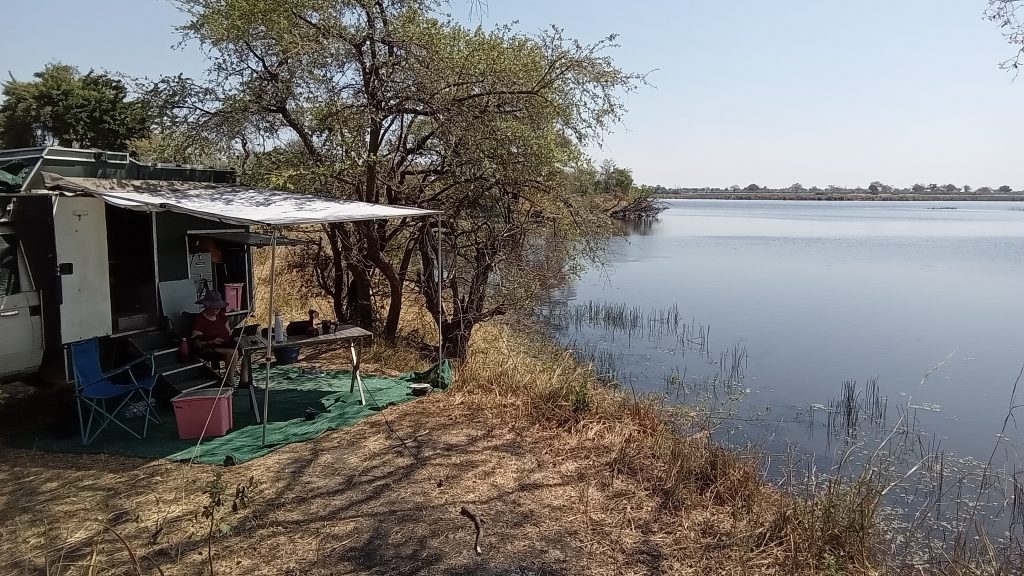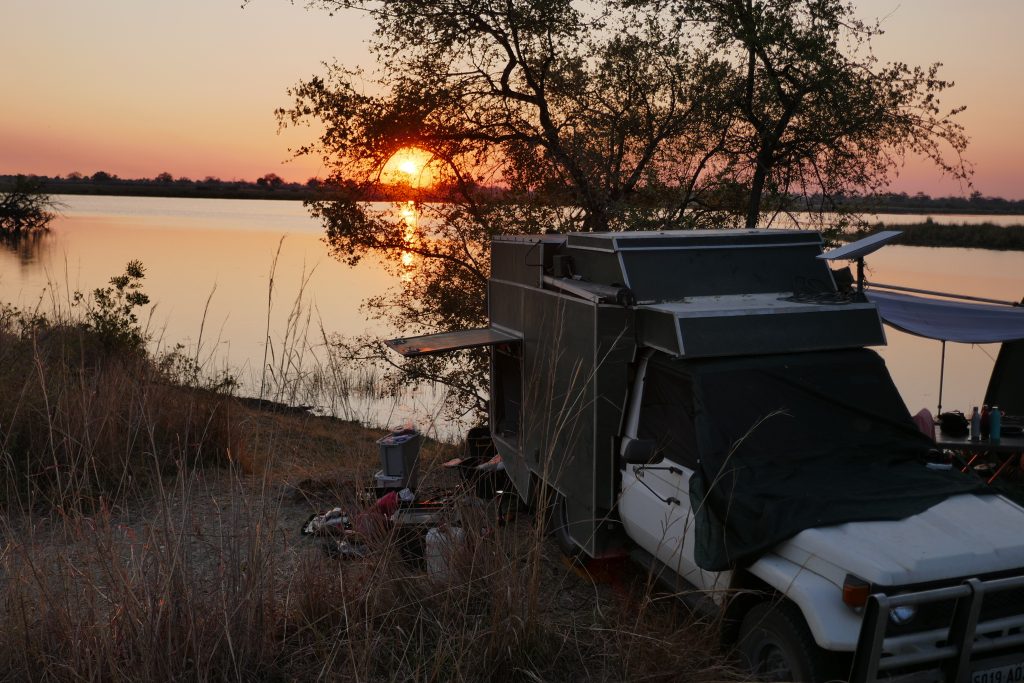Our St Lucia accomodation was one of two campsites behind a guesthouse. The only campsite in town had bad reviews, being run down and expensive. An overlander had come a few years ago to their guesthouse and camped out the back in their garden. That overlander left a review on the iOverlander app, and thus grew their little camping business.
St Lucia is a tourist town. The side streets are full of guesthouses, and the main street is restaurants, tour operators, and shops catering to tourists.
The first day there we headed into iSimangaliso Park. We drove into side loops off the main road to Cape Vidal. The first loop went to a waterhole with maybe 10 hippos all out of the water because it was a cool overcast day. We headed down another loop, but it was eventually closed of by flooding. We drove down to Mission Beach, a rocky beach on the Indian Ocean.
Then along the main road was a traffic jam of cars because a herd of maybe 20 elephants were blocking the road. We waited 30 minutes or so for the elephants to clear the road, so we could pass. We headed into another loop to see if we could follow the elephants, but they had disappeared onto scrub. This loop led to an unsigned posted lookout tower called Kawashelini. This was an interestingly designed lookout tower that was gradually falling apart as a result of lack of maintenance.
We then drove out of the loop to the main road, this time blocked by three white rhino, including a suckling baby rhino.
The next day we walked a 10km route around St Lucia including the boardwalk and the beach. The boardwalk is probably one of St Lucias biggest tourist attractions, a tour bus was there when we walked it. However the boardwalk is falling apart and needs maintenance.
Sunday we headed off south along the N2 to see how far we could get to the Drakensberg. We decided to go right into Durban, only to find some of the N3 was closed, and we were forced into a detour through suburban Durban. Durban is a dense city, way more dense than Joberg. Around 5pm we made it to Glensheiling caravan park for an overnight stay which was located in an area called the Midlands, an area full of food and art places.
The morning we headed into the strangely named town Nottingham Road. We got more supplies at the Spar supermarket, and then headed to Injusuthi campsite in the Drakensberg.



















